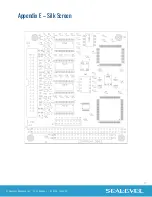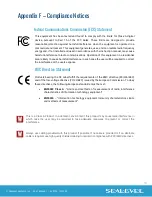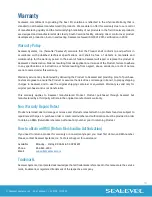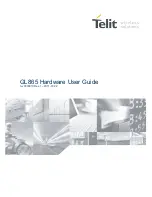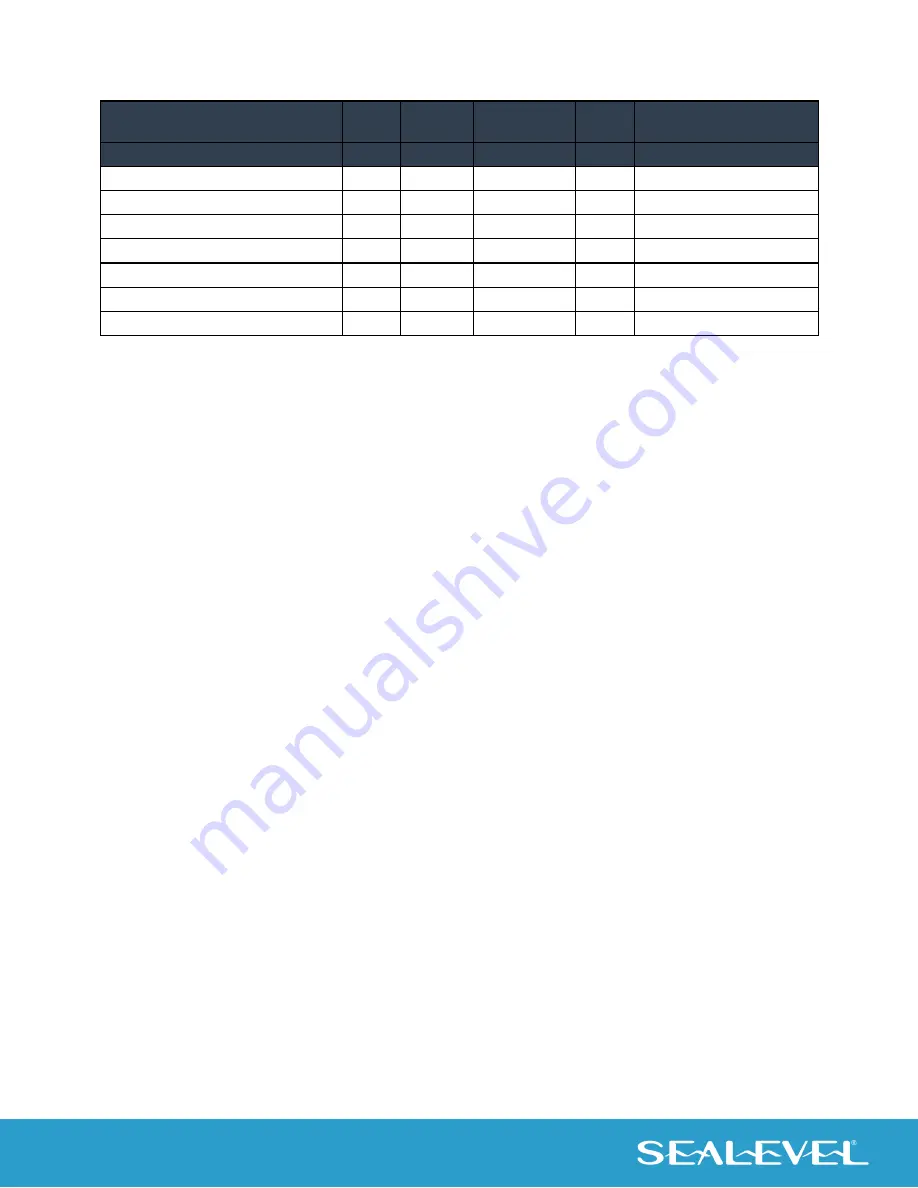
8
© Sealevel Systems, Inc. 3541 Manual | SL9150 12/2022
Power up default (D3-D0 = 0) = RS-485 (tri-stated) without termination.
D3
D2
D1
D0
Control Word Written to
Base +8
Echo 422/485 Termination Mode
Hex
RS-232
X
X
X
1
1
RS-422 no termination
X
1
0
0
4
RS-422 with termination
X
1
1
0
6
RS-485 no termination no echo
0
0
0
0
0
RS-485 no termination with echo
1
0
0
0
8
RS-485 with termination no echo
0
0
1
0
2
RS-485 with termination with echo
1
0
1
0
A
Line Termination
Typically, each end of the RS-485 bus must have line-terminating resistors (RS-422 terminates at the receive
end only). One of the unique features of the
C4-104.ULTRA
is its ability to select this termination via a
control word in the control port. It is completely software selectable, thus reducing the complexity of
cabling typically found in RS-485 implementations. Typically a 120-ohm resistor is across each RS-422/485
input in addition to a 1K-ohm pull-up/pull-down combination that biases the receiver inputs. The
C4-
104.ULTRA
mimics this typical termination electrically. If multiple
C4-104.ULTRA
adapters are configured
in an RS-485 network, only the boards on each end should have the termination in place
.
RS-485 ‘Echo’
The RS-485 ‘Echo’ is the result of connecting the receiver inputs to the transmitter outputs. Every time a
character is transmitted; it is also received. This can be beneficial if the software can handle echoing (i.e.
using received characters to throttle the transmitter) or it can confuse the system if the software does not.
An RS-485 ‘No Echo’ option is selected by writing the correct control word to the control port.

















